
Crofton Pumping Station, near the village of Great Bedwyn in Wiltshire, England, supplies the summit pound of the Kennet and Avon Canal with water.
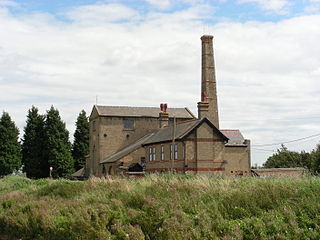
Stretham Old Engine is a steam-powered engine just south of Stretham in Cambridgeshire, England, that was used to pump water from flood-affected areas of The Fens back into the River Great Ouse. It is one of only three surviving drainage engines in East Anglia, and is a Grade II* listed building.

Blagdon Lake lies in a valley at the northern edge of the Mendip Hills, close to the village of Blagdon and approximately 10 miles (16 km) south of Bristol, England. The lake was created by Bristol Water, when it dammed the River Yeo, starting construction in 1898, to designs by Charles Hawksley, and completing this in 1905. The Wrington Vale Light Railway was constructed primarily to bring building materials for the lake.
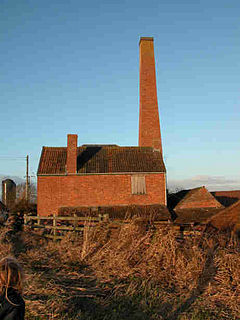
The Westonzoyland Pumping Station Museum of Steam Power and Land Drainage is a small industrial heritage museum dedicated to steam powered machinery at Westonzoyland in the English county of Somerset. It is a Grade II* listed building.
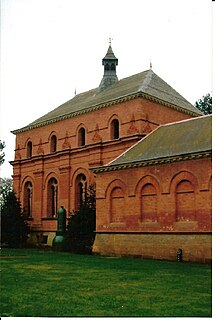
Papplewick Pumping Station, situated in open agricultural land approximately 3 miles (4.8 km) by road from the Nottinghamshire village of Papplewick, was built by Nottingham Corporation Water Department between 1881 and 1884 to pump water from the Bunter sandstone to provide drinking water to the City of Nottingham, in England. Two beam engines, supplied with steam by six Lancashire boilers, were housed in Gothic Revival buildings. Apart from changes to the boiler grates, the equipment remained in its original form until the station was decommissioned in 1969, when it was replaced by four submersible electric pumps.
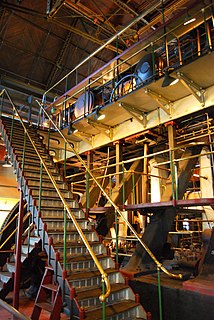
The Leavitt-Riedler Pumping Engine (1894) is a historic steam engine located in the former Chestnut Hill High Service Pumping Station, in Boston, Massachusetts. It has been declared a historic mechanical engineering landmark by the American Society of Mechanical Engineers. The pumping station was decommissioned in the 1970s, and turned into the Metropolitan Waterworks Museum in 2011.

A boiler or steam generator is a device used to create steam by applying heat energy to water. Although the definitions are somewhat flexible, it can be said that older steam generators were commonly termed boilers and worked at low to medium pressure but, at pressures above this, it is more usual to speak of a steam generator.

Bellevue Standpipe is a historic water storage tank on Bellevue Hill at Washington Street and West Roxbury Parkway in the Stony Brook Reservation of Boston, Massachusetts. Built in 1914, it is one of three early 20th-century water tanks built as part of Greater Boston's public water supply. The structure was added to the National Register of Historic Places in 1990.

Baltimore is a preserved steam-powered tugboat, built in 1906 by the Skinner Shipbuilding Company of Baltimore, Maryland. She is formerly the oldest operating steam tugboat in the United States, but at present does not hold an operating license issued by the US Coast Guard, so is unable to leave her dock at the Baltimore Museum of Industry on Key Highway, Baltimore. Her hull is not capable of operating on open water. Baltimore was built and operated as a harbor inspection tug, capable of acting as a municipal tugboat for city barges, as well as an official welcoming vessel and VIP launch, an auxiliary fireboat, and as a light icebreaker.

Fall River Waterworks is a 22-acre (8.9 ha) historic site located at the eastern end Bedford Street in Fall River, Massachusetts, along the shore of North Watuppa Pond. The property, which is still used as a water works for the city, contains the original pumping station, intake house and 121-foot (37 m) tall standpipe water tower. The system was originally built between 1872 and 1875, and expanded or upgraded many times. It was added to the National Register of Historic Places in 1981.

Forth Banks Power Station refers to a now-demolished coal-fired power station in North East England. It was situated in the city centre of Newcastle upon Tyne on Forth Banks, a street to the rear of Newcastle Central station. Put up in a disused factory building in 1890 by the Newcastle and District Electric Lighting Company (DisCo), it is notable as the first power station in the world to use turbo alternators, as well as being one of the first municipal power stations in the United Kingdom.

Walka Water Works is a heritage-listed 19th-century pumping station at 55 Scobies Lane, Oakhampton Heights, City of Maitland, New South Wales, Australia. Originally built in 1887 to supply water to Newcastle and the lower Hunter Valley, it has since been restored and preserved and is part of Maitland City Council's Walka Recreation and Wildlife Reserve. It was added to the New South Wales State Heritage Register on 2 April 1999.

Manors Power Station or the Tramways Generating Station is a former coal-fired power station located in the Manors district of the city centre of Newcastle upon Tyne, Tyne and Wear in North East England. The station's turbine hall and other remaining buildings are Grade II listed.
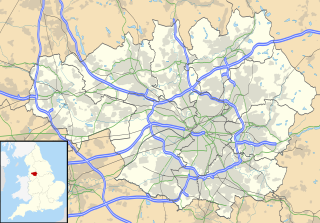
Shudehill Mill or Simpson's Mill was a very early cotton mill in Manchester city centre, England. It was built in 1782 by for Richard Arkwright and his partners and destroyed by fire in 1854. It was rebuilt and finally destroyed during the Manchester Blitz in 1940. One of Arkwright's larger mills, it was built three years before his patent lapsed. The mill had a 30 feet diameter water wheel and a Newcomen atmospheric engine was installed. Doubts remain as to why the engine was installed, whether it was a failed attempt to power a mill directly by steam or was modified to assist the wheel. It is possible that this engine, constructed by Hunt, could have been one of the 13 engines installed in Manchester mills by Joshua Wrigley. Water from the upper storage pond turned the water wheel to drive the mill. The steam engine recycled water from the lower storage pond to the upper storage pond. Three more Boulton and Watt engines were installed to power the increasing number of spindles.

The Pinchbeck Engine is a drainage engine, a rotative beam engine built in 1833 to drain Pinchbeck Marsh, to the north of Spalding, Lincolnshire, in England. Until it was shut down in 1952, the engine discharged into the Blue Gowt which joins the River Glen at Surfleet Seas End.
Mitchells Creek is a creek in central New South Wales, Australia. Rising north-east of Wellington, New South Wales, Mitchells Creek flows generally northward and joins the Talbragar River about 5 km south-west of Ballimore. The direct distance from its source to its outlet is 31 kilometres, longer via the twists and turns of the watercourse.

The Cambridge Museum of Technology is an industrial heritage museum situated in Cambridge, England. The original building, a Scheduled Ancient Monument, housed a combined sewage pumping and waste destructor station built in 1894. The Museum helps people to explore, enjoy, and learn about their industrial heritage by celebrating the achievements of local industries and the people who worked in them. The large site on the River Cam has green spaces for picnics and a fun, relaxed atmosphere for families. There are audio-visual displays, hands-on exhibits, and children’s activities, as well as traditional museum displays and historic buildings. The Victorian Pumping Station with its original machinery showcases 19th-century engineering and technology. Displays on the forgotten industries of Cambridge reveal an alternative side of the city’s history to the famous colleges. And the story is brought into the 20th Century with exhibitions on innovative local companies in our new Pye building. Featuring Pye and Cambridge Scientific Instrument Company.

The British Engineerium is an engineering and steam power museum in Hove, East Sussex. It is housed in the Goldstone Pumping Station, a set of High Victorian Gothic buildings started in 1866. The Goldstone Pumping Station supplied water to the local area for more than a century before it was converted to its present use. The site has been closed to the public since 2006, and in March 2018, the entire complex was put up for sale.
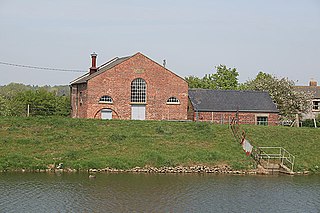
The Dogdyke Engine is a drainage engine near Tattershall, Lincolnshire, in England. The drainage of 2,500 acres (1,012 ha) of land around Tattershall was authorised in 1796, and came under the control of the Witham Third District commissioners in 1844

The Ryde Pumping Station is a heritage-listed pumping station and offices located at Victoria Road, West Ryde in the City of Ryde local government area of New South Wales, Australia. It was built from 1891 to 1921 by William Adams & Co. Ltd., State Monier Works, Refshaw & O'Brien. It is also known as Ryde Pumping Station and site, WP005 and West Ryde Pumping Station. The property is owned by Sydney Water, an agency of the Government of New South Wales. It was added to the New South Wales State Heritage Register on 15 November 2002.






















